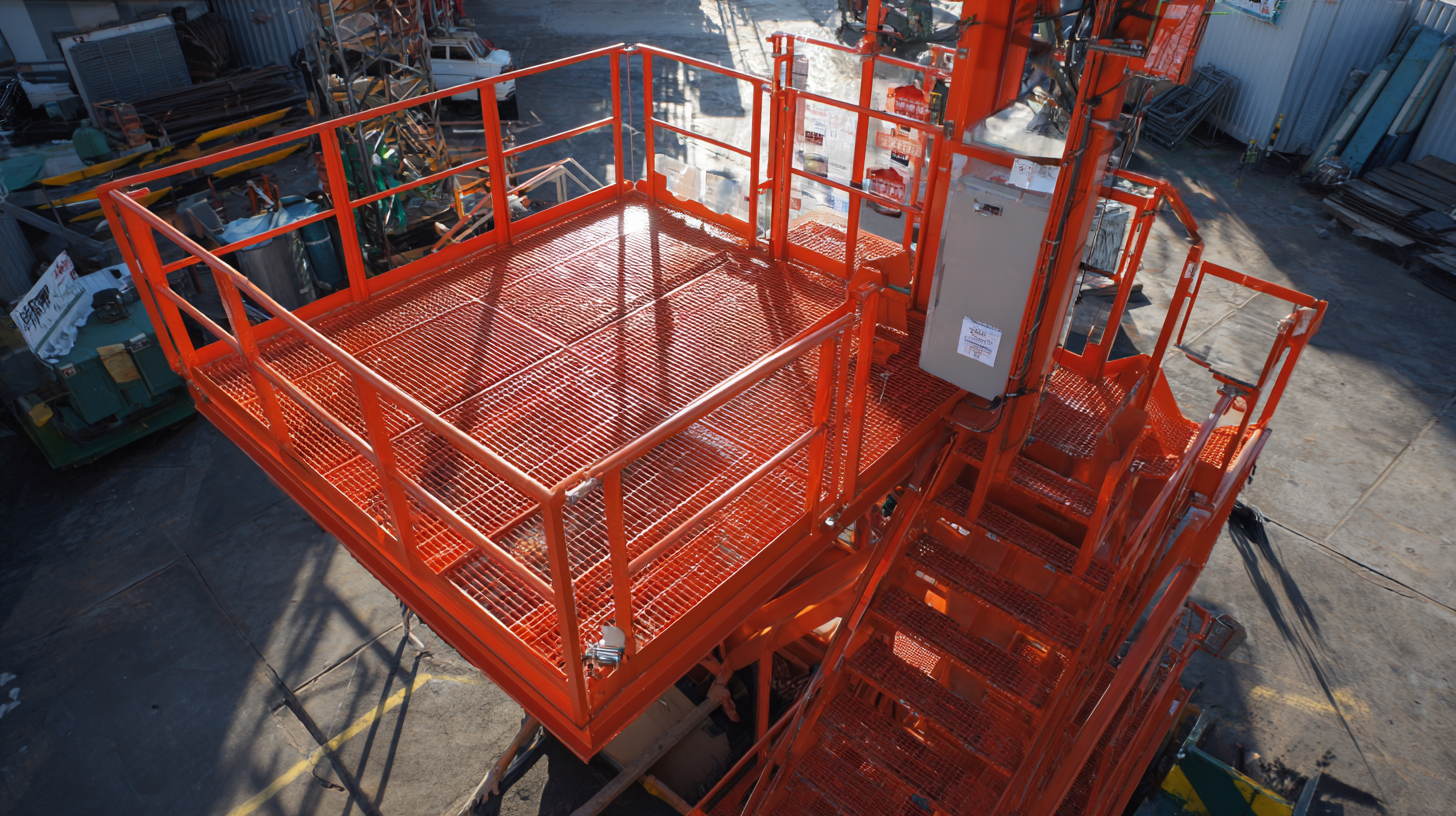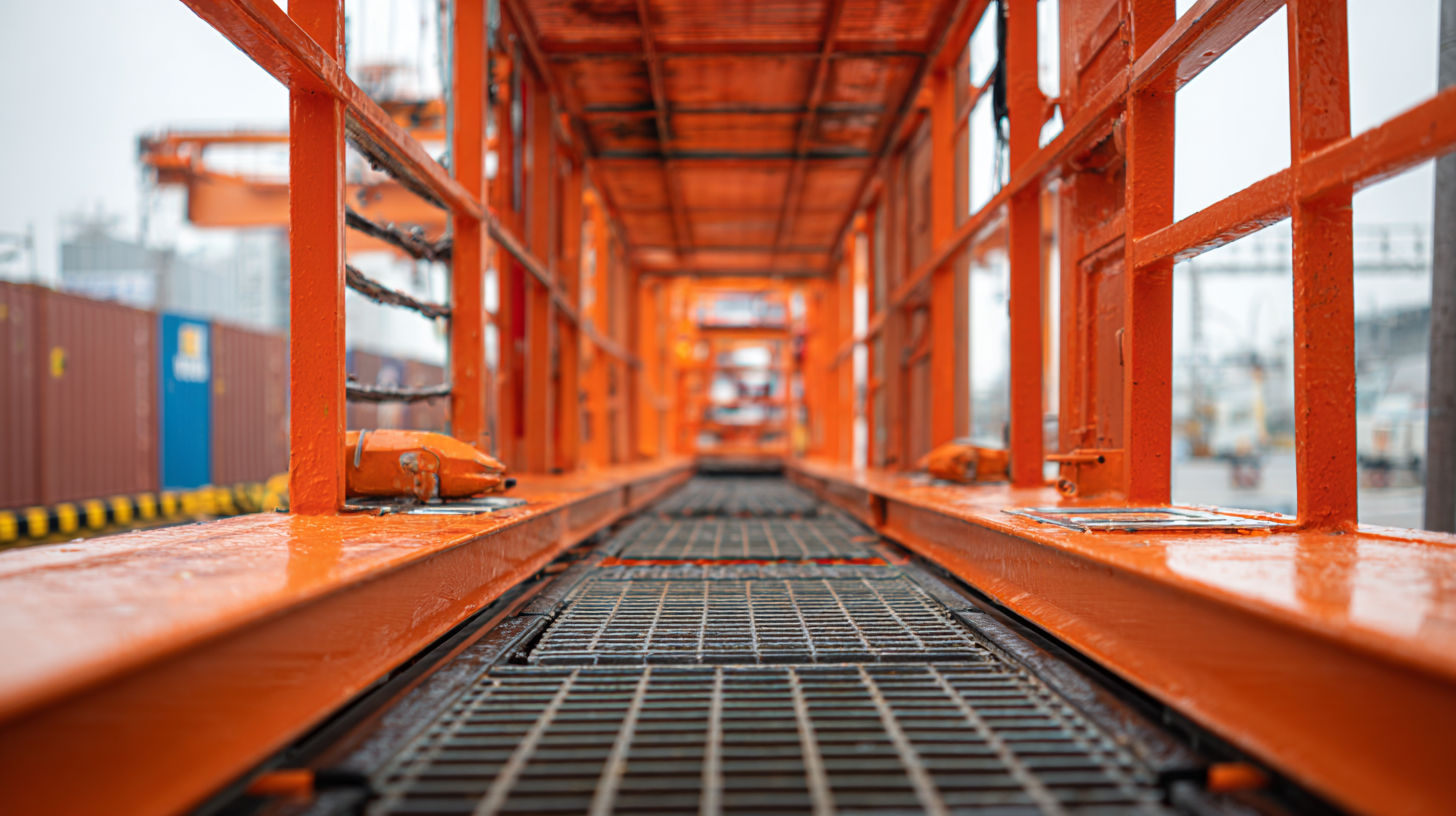Enhancing Future Safety: Cost-Effective Maintenance Solutions Beyond ANSI A92 MEWP Standards
 In the evolving landscape of mobile elevating work platforms (MEWPs), adhering to ANSI A92 MEWP Standards has become imperative for ensuring safety and operational efficiency. The latest industry reports indicate that compliance with these regulations can reduce accident rates by up to 30%, significantly mitigating risks for personnel operating at heights.
As the demand for cost-effective maintenance solutions rises, manufacturers worldwide are shifting their focus toward enhancing safety features without compromising on quality. This shift is particularly evident in top-tier factories in China, where innovative technologies and rigorous quality control processes are being implemented. By exploring these advancements, companies can not only meet and exceed ANSI A92 MEWP Standards but also secure a competitive edge in the marketplace, ensuring both safety and sustainability in their operations.
In the evolving landscape of mobile elevating work platforms (MEWPs), adhering to ANSI A92 MEWP Standards has become imperative for ensuring safety and operational efficiency. The latest industry reports indicate that compliance with these regulations can reduce accident rates by up to 30%, significantly mitigating risks for personnel operating at heights.
As the demand for cost-effective maintenance solutions rises, manufacturers worldwide are shifting their focus toward enhancing safety features without compromising on quality. This shift is particularly evident in top-tier factories in China, where innovative technologies and rigorous quality control processes are being implemented. By exploring these advancements, companies can not only meet and exceed ANSI A92 MEWP Standards but also secure a competitive edge in the marketplace, ensuring both safety and sustainability in their operations.
Cost-Effective Strategies for Long-Term MEWP Maintenance Planning
 Maintaining Mobile Elevating Work Platforms (MEWPs) requires careful planning and execution to ensure safety and efficiency. With the global MEWP market projected to grow at a CAGR of 10% from 2023 to 2028, organizations must prioritize cost-effective maintenance strategies that align with industry standards, like ANSI A92. One critical aspect of long-term maintenance planning is implementing a proactive rather than reactive approach. Regular inspections and timely servicing can prevent unexpected breakdowns and associated costs, which can soar as high as 20% of total fleet expense, according to a recent industry report.
Maintaining Mobile Elevating Work Platforms (MEWPs) requires careful planning and execution to ensure safety and efficiency. With the global MEWP market projected to grow at a CAGR of 10% from 2023 to 2028, organizations must prioritize cost-effective maintenance strategies that align with industry standards, like ANSI A92. One critical aspect of long-term maintenance planning is implementing a proactive rather than reactive approach. Regular inspections and timely servicing can prevent unexpected breakdowns and associated costs, which can soar as high as 20% of total fleet expense, according to a recent industry report.
Tip: Establish a maintenance schedule for your MEWPs that aligns with manufacturers' recommendations and usage patterns. This can significantly reduce the risk of accidents while enhancing the lifespan of your equipment.
Additionally, investing in training for operators is essential. Studies indicate that well-trained operators can reduce maintenance-related incidents by up to 30%. Regular training sessions that cover best practices and compliance with safety protocols will not only improve operator competence but also foster a culture of safety within the workplace.
Tip: Incorporate digital tools and software for tracking maintenance activities and history. This provides valuable insights into performance trends, enabling informed decisions about repairs and replacements.
Understanding ANSI A92 Standards and Their Impact on Safety Protocols
The ANSI A92 standards set the benchmark for safety in the use of Mobile Elevating Work Platforms (MEWPs), emphasizing the importance of effective protocols to protect workers at heights. According to the "2022 A92 Standards Overview," over 80% of workplace accidents related to lifting equipment occur due to improper safety practices. The standards aim to mitigate these risks through comprehensive guidelines covering equipment design, operation, and training. Organizations that strictly adhere to ANSI A92 have reported a 30% reduction in incident rates, showcasing the standards' positive impact on workplace safety.
Additionally, understanding the nuances of ANSI A92 standards allows companies to develop robust safety protocols that extend beyond mere compliance. A recent report by the Occupational Safety and Health Administration (OSHA) noted that companies that invest in continual training and maintenance aligned with ANSI A92 experience not only fewer injuries but also enhanced operational efficiency. By prioritizing effective maintenance solutions and ensuring that all personnel are trained in line with these industry standards, businesses can significantly bolster safety while reducing long-term costs associated with accidents and equipment downtime.
Impact of Maintenance Solutions on Safety Protocols
Data-Driven Approaches: Analyzing Maintenance Costs versus Safety Incidents
In the realm of Mobile Elevating Work Platforms (MEWPs), data-driven maintenance strategies hold the key to future safety enhancements. A 2021 report by the International Association of Safe Trucking (IAST) revealed that organizations utilizing data analytics for maintenance saw a 25% reduction in safety incidents over three years. This correlation underscores the importance of proactive, informed decision-making in balancing maintenance costs with safety outcomes.
To optimize maintenance budgets while ensuring the highest safety standards, operators should implement predictive maintenance models. These models analyze equipment data to anticipate failures before they occur, potentially lowering unexpected repair costs by up to 30%, according to a study by the National Safety Council.
Tips: Regularly monitor performance metrics and conduct comprehensive audits on all MEWP equipment. Leverage historical data to identify patterns that may indicate potential safety issues using maintenance records. Additionally, training personnel on the importance of data collection can further enhance safety measures within the organization.

Emerging Technologies for Predictive Maintenance in MEWP Operations
As the construction and maintenance sectors evolve, the adoption of emerging technologies for predictive maintenance in Mobile Elevating Work Platforms (MEWPs) is becoming critical. Industry reports highlight that predictive maintenance can lead to a reduction in overall maintenance costs by as much as 20-30%, showcasing significant financial benefits for operators. This approach not only extends the life of equipment but also enhances safety, a top priority in MEWP operations. The integration of IoT sensors and advanced analytics means that potential issues can be identified and addressed before they evolve into costly repairs or create unsafe working conditions.
Tips for Effective Predictive Maintenance:
1. **Implement IoT Solutions**: Enable constant monitoring of equipment performance to detect early signs of wear and tear.
2. **Train Your Team**: Ensure that staff are well-versed in the use of new technologies and can interpret data effectively to make informed maintenance decisions.
3. **Regularly Review Data**: Schedule frequent evaluations of maintenance data to identify trends and adjust operational practices accordingly.
As leaders in the industry suggest, higher capacities combined with more compact sizes in MEWPs mean greater versatility on the job site. This shift towards more efficient equipment not only meets customer demands but also aligns with the rising trend of predictive maintenance, prioritizing safety and efficiency in operations.
Enhancing Future Safety: Cost-Effective Maintenance Solutions Beyond ANSI A92 MEWP Standards - Emerging Technologies for Predictive Maintenance in MEWP Operations
| Category | Technology | Benefits | Cost Impact | Implementation Time |
|---|---|---|---|---|
| IoT Sensors | Real-time data collection | Improved accuracy in maintenance needs | Reduces unexpected repair costs by 30% | 1-3 months |
| Predictive Analytics | Data-driven maintenance scheduling | Minimizes downtime and optimizes usage | Potential savings of 20% on maintenance | 3-6 months |
| Drone Inspections | Aerial assessments of equipment | Faster and safer inspections | Reduces labor costs by 50% | 1 month |
| Mobile Apps | Maintenance tracking and alerts | Enhances communication and reporting | Can decrease oversight costs by 15% | 2-4 months |
| Machine Learning | Failure prediction models | Increases reliability of equipment | May lead to 25% lower repair expenses | 6-12 months |
Implementing Training Programs: Enhancing Safety Compliance and Performance
Training programs are essential for enhancing safety compliance and performance in the operation of mobile elevating work platforms (MEWPs). By providing operators and maintenance personnel with up-to-date knowledge and skills, organizations can significantly reduce the risk of accidents and improve overall efficiency. Implementing a robust training curriculum not only ensures adherence to ANSI A92 standards but also fosters a culture of safety within the workforce.
Tip: Regularly reassess training materials to incorporate the latest safety protocols and industry best practices. This ensures that employees are well-informed and can effectively respond to any challenges that may arise in their work environment.
Creating a structured training program can include hands-on training, simulation exercises, and safety audits. Engaging employees through interactive sessions encourages better retention of information and promotes teamwork in safety practices. It’s also vital to continually evaluate and update these training programs based on feedback and incidents to enhance their effectiveness.
Tip: Encourage employees to share insights and experiences from their training. This peer-to-peer exchange can lead to improved understanding and highlight areas needing further attention, making the safety training process even more impactful.
